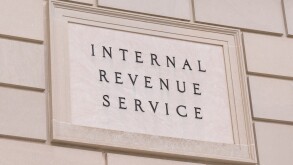
|

|
|
Nancy Diep |
Corinne MacCarthy |
At the annual Canadian Tax Foundation conference on December 2 2014, the Canada Revenue Agency (CRA) was asked whether it would apply the general anti-avoidance rule (GAAR) to the application of a tax-deferred transfer of assets to a partnership under subsection 97(2) of the Income Tax Act (ITA) where taxpayers initially formed a partnership with only Canadian resident partners in order to meet the requirements under the rule but, shortly after the transfer, admitted non-resident partners. Subsection 97(2) is an elective provision and generally requires that the transferor immediately after the transfer be a member of the partnership and that the partnership be a Canadian partnership, which is defined as a partnership all of whose members are resident in Canada. This is a point-in-time test so the subsequent admission of non-resident partners technically should not impact the application of the rule.
The CRA provided an example where Corp A (a Canadian resident) forms a partnership with its wholly-owned Canadian subsidiary. Corp A transfers, under subsection 97(2), property to the partnership with a cost of $100,000, fair market value of $100,000 and an undepreciated capital cost balance of $50,000 in exchange for 50,000 partnership units worth $50,000 and a $50,000 promissory note. The next day, a non-resident contributes $50,000 for 50,000 partnership units, which cash is used by the partnership to repay the promissory note. The non-resident has a 49.95% interest in the partnership while Corp A's interest is diluted to 50.04%.
The CRA indicated that it would seek to apply the GAAR to this type of arrangement. According to the CRA, the application of the GAAR in the circumstances is based not only on the policy behind subsection 97(2) but also subsection 100(1) and certain related anti-avoidance provisions in subsections 100(1.4) and (1.5). These rules generally prevent taxpayers from directly or indirectly selling partnership interests to non-residents in order to convert what would otherwise be income into a capital gain and avoid future taxation in Canada altogether where the interest is not taxable Canadian property to the non-resident.
If Corp A had disposed of a portion of its partnership interest directly to the non-resident, subsection 100(1) would have applied, resulting in a fully taxable gain. In terms of the anti-avoidance provisions, although there has been a dilution of Corp A's interest in the partnership, the fair market value of Corp A's interest itself has not been diluted so the arrangement would not have been caught by subsections 100 (1.4) and (1.5).
Given the particular circumstances of the example considered, it is not clear how broadly CRA would take this approach where a non-resident has become a partner after property has been contributed to the partnership under section 97(2). Furthermore, the role of subsection 100(1) in the context of subsection 97(2) for the purposes of any GAAR determination requires a careful review of the relevant facts of any particular transaction(s), as how transaction(s) come about and why they take place necessarily affect conclusions about how the GAAR may apply, even to a transaction that appears structurally similar to that considered by the CRA.
Nancy Diep (nancy.diep@blakes.com) and Corinne MacCarthy (corinne.mccarthy@blakes.com), Calgary
Blake, Cassels & Graydon
Tel: +1 403 260 9779 and +1 403 260 9758
Website: www.blakes.com









